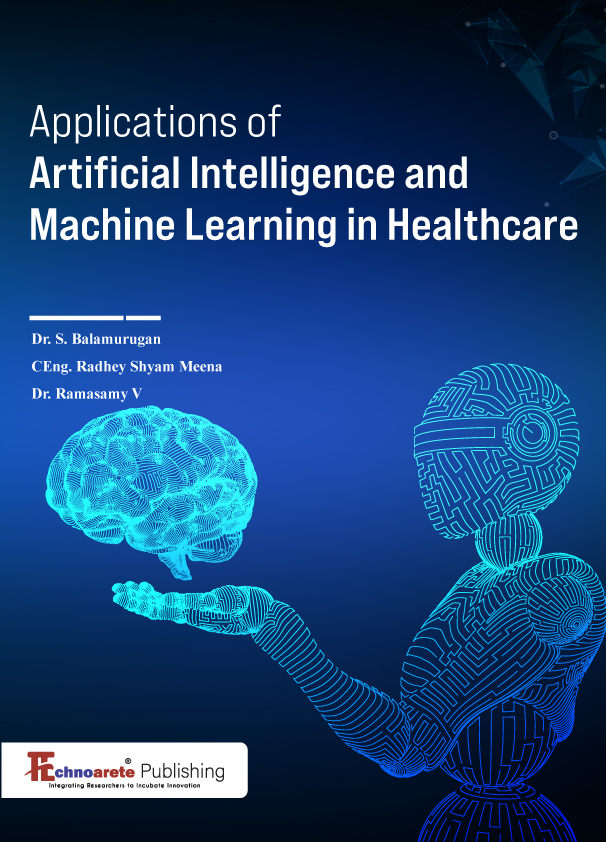Image Processing Modalities & Principles Involved in Disease Diagnosis and Prognosis
Author :Dr.S.Rajalaxmi
Associate Professor & Head, Department of Biomedical Engineering, Mahendra College of Engineering, Salem. Tamil Nadu.
Abstract :
Image Processing is a prominent tool which supports medical experts to probe in effectively with their diagnosis and prognosis procedures. Imaging human body have been developed prominently in the last two decades and had aided many decision support systems. This had also proved in curing multiple diseases which was a challenge in the past. Imaging is done in human body at various modalities and is categorized based on images produced. Ultrasound Imaging, Magnetic Resonance Imaging, X-Rays, Computed Tomography, Positron Emission Tomography and Single Emission Photon Emission Computed Tomography are the mostly utilized medical imaging modalities. They play a vital role in supporting medical experts with high precision accuracy in visualizing the internal organs and tissues. In imaging, artefacts are a major issue in capturing the expected image and position of the organ or tissue or a cell in the human body. For accurate diagnosis, lucid imaging details of the region of interest are required to read the minute details of the affected organ/cell/tissue. Researchers have contributed multiple noise filtering algorithms and some of the algorithms are accommodated with the imaging system. This will provide a filtered image thereby aiding the medical experts with clear picture in diagnosing the disease from the region of interest. The boom of Artificial Intelligence is a dominant support in future medical imaging modalities as it is surpassing the critics in the current time. It has the capability to process enormous quantity of medical images with high precision and accuracy and with fine details that are invisible in naked eyes. The roaring development of Artificial Intelligence in medical imaging will provide medical experts with value added task and will thereby enhance patient interaction times.
Keywords:
- Medical Imaging
- Radiology
- Artefacts
- X-Rays
- CT
- PET
- Ultrasound
- MRI
- Fluroscopy
- Imaging modalities
- Artificial Intelligence in medical imaging
Reference
[1] Andrew Rubin, “History of Medical Imaging – a brief overview”, 2017, Newsletter, Flushing Hospital Medical Centre.
[2] Yousif Mohamed Y. Abdallah, “History of Medical Imaging”, 2017, Medical History, Archieves of Medicine & Health Sciences, Vol. 5, No. 2, pp:275-278.
[3] Raymond A Schulz, Jay A Stein, Norbert J Pelc, 2021, “How CT happened: the early development of Computed Tomography”, Journal of Medical Imaging, pp:1-26, Vol.8, No.5, 052110.
[4] Robert R Edelman, 2014, “The History of MR Imaging as seen through the pages of Radiology”, Radiology, pp: 181-200, Vol.275, No.2S, https://doi.org/10.1148/radiol.14140706.
[5] National Cancer Institute, About Cancer, Causes Prevention, www.cancer.gov.
[6] National Institutes of Health, National Institute of Biomedical Imaging and Bioengineering, Engineering the Future of Health, https://www.nibib.nih.gov/science-education/science-topics/ultrasound.
[7] Jayant Pai Dhungat, 2018, “History of Ultrasound in Medicine”, Journal of The Association of Physicians of India, Vol. 66, No. Medical Philately, ISSN: 0004-5772
[8] Jess Winans, 2018, “Melville’s Dr.Raymond Damadian, the Father of MRI, Long Island Press
[9] National Institutes of Health, National Institute of Biomedical Imaging and Bioengineering, Engineering the Future of Health, https://www.nibib.nih.gov/science-education/science-topics/magnetic resonance imaging.
[10] Robert R.Edelman, 2014, “The History of MR Imaging as seen through the pages of Radiology”, Centennial Review, MR Imaging, Radiology, Vol.273, No.2, pp: S181-S200, www.radiology.rsna.org.
[11] Vijay P B Grover & et.al, 2015, “Magnetic Resonance Imaging: Principles and Techniques: Lessons for Clinicians”, Journal of Clinical and experimental Hepatology, Vol.5, No.3, pp: 246-255.
[12] John R Hesselink, “Basic Principles of MR Imaging”, http://spinwarp.ucsd.edu/neuroweb/Text/br-100.htm.
[13] Stephen P Power, et al, 2016, “Computed Tomography and Patient Risks: Facts, Perceptions and Uncertainities”, World Journal of Radiology, National Library of Medicine, Vol. 8, No.12, pp: 902-915.
[14] Number of Examinations with Computed Tomography (CT) in selected countries as of 2019 (per 1000 inhabitants), 2021, Statisca, Medical Technology, Health, Pharma & Medtech.
[15] Conall J Garvey, Rebecca Hanlon, 2002, “Computed Tomography in Clinical Practice” British Medical Journal, National Center of Biotechnology Information, Vol. 324, No. 7345, pp: 1077-1080.
[16] Shervin Kamalian, M.H.Lev, Rajiv Gupta, 2016, “Chapter 1 – Computed Tomography Imaging and Angiography - Principles”, Handbook of Clinical Neurology, Elsevier, Vol. 135, pp: 3-20.
[17] Positron Emission Tomography (PET), Health, Johns Hopkins Medicine, https://www.hopkinsmedicine.org/health/treatment-tests-and-therapies/positron-emission-tomography-pet
[18] Patient Basics: Positron Emission Tomography (PET Scan), 2014, published by Harvard Health.
[19] Brian Krans, 2021, “What is a Positron Emission Tomography (PET) Scan?”, Healthline, https://www.healthline.com/health/pet-scan.
[20] Abi Berger, 2003, “Positron Emission Tomography”, British Medical Journal, Vol. 326, No.7404, PubMed Central, National Library of medicine, National Center for Biotechnology Information.
[21] Eric Berg, Simon R Cherry, 2018, “Innovations in Instrumentation for Positron Emission Tomography”, Seminars in Nuclear Medicine, Vol. 48, No.4, pp: 311-331, PubMed Central, National Library of medicine, National Center for Biotechnology Information.
[22] Shetty A, Dr.Henry Knipe, 2021, “X-Ray Artifacts” Reference Article, Radiopaedia.org, https://doi.org/10.53347/rID-27307.
[23] Andrew Murphy, 2020, “Grid Cut-off” Reference Article, Radiopaedia.org, https://doi.org/10.53347/rID-54189.
[24] Goel A, Bell D, 2021, “Ultrasound Artifacts”, Reference Article, Radiopaedia.org, https://doi.org/10.53347/rID-31476.
[25] Aston Diaz, 2015, “Most Common Artifacts in MRI”, Reference Article, Sensible Solutions for Refurbished Radiology, Atlantis Worldwide [website].
[26] Julia F Barrett, Nicholas Keat, 2004, “Artefacts in Ct: Recognition and Avoidance”, Radiographics, Vol. 24, No.6, pp: 1679-1691.
[27] Nalin Kumar, Nachamai, 2017, “Noise Removal and Filtering Techniques used in Medical Images”, Oriental Journal of Computer Science and Technology, Vol. 10, No.1.
[28] Ohad Oren, Bernard J Gersh, Deepak L Bhatt, 2020, “Artificial Intelligence in Medical Imaging: switching from radiographic pathologic data to clinically meaningful endpoints”, Vol. 2, No. 9, pp: E486 – 488.
[29] Xiaoli Tang, 2020, “The role of Artificial Intelligence in medical imaging research”, Vol.2, No.1, PMC7594889.
[30] Dr.Joon Beom Seo, 2018, “Augmented Intelligence rather than Artificial”, Diagnostic Imaging, healthcare-in-europe.com [from website]
[31] Paula R Patel, Orlando De Jesus, 2022, “CT Scan”, National Center of Biotechnology Information, StatPearls Publishing.

